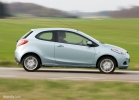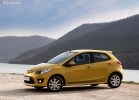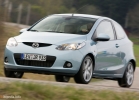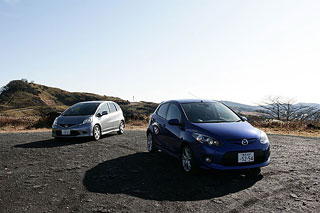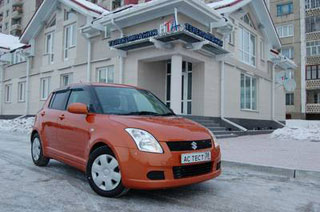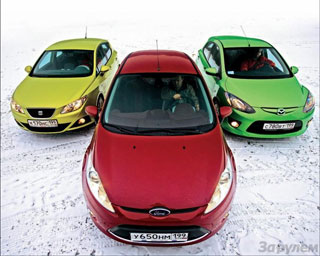Mazda Mazda 2 test drive since 2007 hatchback
My half ...
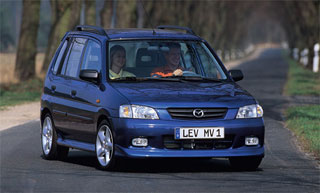 Japanese with their high technologies, original national cuisine, futuristic cities and high -quality cars are not only praised, but often scolded
Japanese with their high technologies, original national cuisine, futuristic cities and high -quality cars are not only praised, but often scolded In particular, Japanese manufacturers are often condemned for the fact that they do not replenish the global automotive industry in any fundamentally new, take ready -made solutions and bring them to the gloss characteristic of Japanese products. The haters, of course, are cunning. For example, the first mass hybrid car originally from the country of the rising sun, and it does not matter that individual small components and solutions may have been developed in Guadeloupe or Bryansk, the Japanese introduced the idea, and between the idea and its implementation, as you know, as you know. Big distance. Yes, and the tendency to the emergence of new classes of machines, they always sensed sensitively: Suzuki Samurai was one of the first small beach SUVs, the compact crossover segment reached real popularity only with the coming to the Toyota Rav4 market, and the appearance of the Mikrovenins was anticipated by Mazda Demio, which came out to the same way. How large compact-wenes like Opel Zafira began to breed in Europe.
Actually, today we would like to talk in detail about Demio: at one time, this small little car has become a Renaissance symbol for the brand. Perhaps it was the Demio of the 1996 model (in 2002 it was replaced by the more well -known Mazda 2 in our latitudes, although in some countries DEMIO with the DW index continued to release it until 2007) opened the way with the cult of the cult of Mazda 3 and 6. By the way, do not confuse demio With model 121, despite the fact that in some markets it was called that way, but there is a completely different 121, created on the basis of Ford Fiesta. These are completely different cars.
First of all, these cars differ externally: if the 121st model built on the basis of Fiesta seems to be an ordinary hatchback without complaints, then 121/Demio dried up mini-wen. Incidentally, a good option for young people: large high cars such as Toyota BB among admirers of Underground is now in fashion. At the same time, the appearance of Demio is not so causing to scare away potential buyers who need just a practical spacious car for traveling around the city. The body in our conditions behaves quite decent: pronounced problems associated with corrosion resistance, this machine does not, as there are no serious malfunctions in an electrician.
Characteristics
Hatchback body type
The number of doors 5
Sum of places 5
Length 3800 mm
Width 1670 mm
Height 1535 mm
Wheel base 2390 mm
Road clearance 140 mm
Suspension type:
Front independent, with racks like MacPherson
Rear semi -dependent, spring
Type of drive front
Brakes:
Front disc
The rear drum
Gas tank volume 43 liters
Acceleration to 100 km/h* 14 s
Max. Speed* 151 km/h
Fuel consumption, l*:
City 9
Track 6
* Data for a car with a base engine of 1.3 liters.
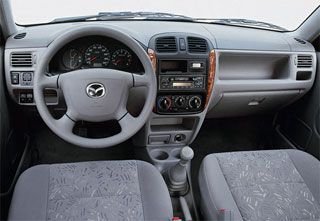 The interior entirely and fully corresponds to the appearance of this car: the salon is unpretentious, although it does not inspire longing. But it is still designed simple: the temperature in the cabin (not all cars) is adjustable using sliders, the plastic is inexpensive, the skirt of the gearbox lever is simple, the rubber equipment cannot be called rich, but if we are talking about the right -handed version, then, among other things, you can calculate at least on the basic electric package. The high roof makes Demio quite spacious, which, of course, is a plus.
The interior entirely and fully corresponds to the appearance of this car: the salon is unpretentious, although it does not inspire longing. But it is still designed simple: the temperature in the cabin (not all cars) is adjustable using sliders, the plastic is inexpensive, the skirt of the gearbox lever is simple, the rubber equipment cannot be called rich, but if we are talking about the right -handed version, then, among other things, you can calculate at least on the basic electric package. The high roof makes Demio quite spacious, which, of course, is a plus. The running qualities are ordinary: engines of those about which at best they say: I have enough. At the same time, fuel consumption in the city can reach up to 10 l/100 km, which is a lot for low -commandment. But the controllability is worthy, albeit to the detriment of the smoothness of the course: Demio suspension is rigid. In general, in principle, driving comfort can not be called the strength of this model, so the sound insulation of Demio is unimportant (although the owners usually do not sting and additionally glue the salon with soundproofing sheets).
The choice of engines in Demio by the standards of compacts is amazingly small: only two power units are 1.3-liter with a capacity of 83 hp. and 1.5-liter, developing 100 hp. It is not serious, but just similar motors are laid for such a car. There are practically no complaints about their reliability: know change the oil every 10 thousand km along with all the filters and enjoy life. The replacement of the timing belt is supposed to be made after 80 thousand km of run (which, in general, is normal, this is a decent service life). Congenital defects are practically not observed, except that the engine supports are weak: replacement may be required relatively often, even if original supports are installed.
The gearboxes are both automatic and mechanical. It is impossible to say anything bad about any or the second unit, provided that the basic operational recommendations are observed, that is, you can count on the long service life of the checkpoint and the minimum cost of maintaining its performance. Unlike many other Demio Japanese machines, there is no full -wheel drive.
Certain difficulties may arise with a suspension. The most expensive are the front lower levers, which in cars with large runs often fail. The second problem is weak hub bearings: they are tiny, therefore they break more often than those of golf class models. Otherwise, Demio shows itself a well done: a light car rarely fails and steering, moreover, you don’t even have to sort out the calipers, while other Mazda models are headache, and the owners are forced to sort them out very often, especially in the old ones Car series 626 and Millenia/Xedos 9.
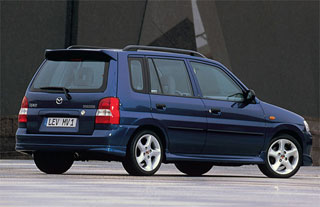 Having examined Demio outside and inside, having studied its consumer qualities, you come to a definite conclusion: a machine. But it hurts it is unpretentious and harmless. Nevertheless, it guesses a certain claim to style, freshness, practicality and even if she has an inexpensive salon, unimportant sound insulation and rather weak motors with excessive appetite, a low price more than compensates for the few Demio of the first -generation. In other words, you can take it! True, a good car is not easy to find today, since the age of the model is far from youthful
Having examined Demio outside and inside, having studied its consumer qualities, you come to a definite conclusion: a machine. But it hurts it is unpretentious and harmless. Nevertheless, it guesses a certain claim to style, freshness, practicality and even if she has an inexpensive salon, unimportant sound insulation and rather weak motors with excessive appetite, a low price more than compensates for the few Demio of the first -generation. In other words, you can take it! True, a good car is not easy to find today, since the age of the model is far from youthful The advantages and disadvantages of the model
Advantages
Reliable controllability, roomy salon, lady exterior
Flaws
Rusted appearance, weak sound insulation, rather large fuel consumption
Approximate price order in Moscow, rub.:
120 thousand (1997 in a 1.3-liter engine);
140 thousand (1998 in a century with a 1.3-liter engine);
160 thousand (1998 in a 1.5-liter engine);
180 thousand (1999 in a 1.5-liter engine);
200 thousand (2000 c. With a 1.3-liter engine);
230 thousand (2002 in a 1.3-liter engine and left wheel).
The author thanks Moscow Mazda-Club for help in preparing the material.
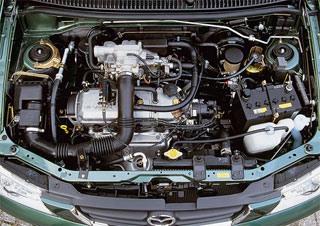
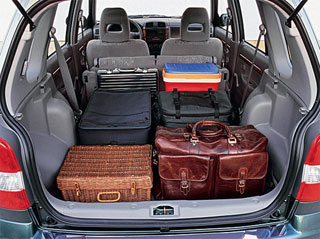
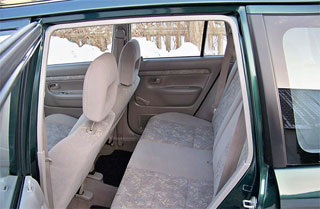

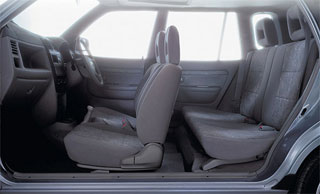

Video crash tests Mazda Mazda 2 since 2007
Mazda Mazda 2 test drive since 2007
Mazda Mazda 2 Crash Test since 2007
Krassh Test: Detailed Information34%
Driver and passengers
18%
Pedestrians
37%
Children-passengers



